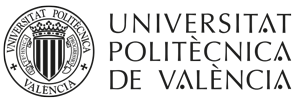In the last decades, the number of people living in urban areas has grown dramatically throughout the world and this trend continues to grow. According to data from The World Bank, in 1960, 61% of people in the European Union lived in urban areas and in 2015 this number increased to 75%. In Spain, where industrialization has taken place later than in other countries, this increase is even more pronounced, from 57% to 80%.
The increase in urban population has led to a drastic rise in transportation necessities. As a result, traffic and environmental problems (CO2 emissions, air pollution, noise, etc.) have increased, and such problems have a direct impact on the quality of life in cities. Among the main challenges that big cities face nowadays is that of managing the mobility of both people and goods.
The "classic" way of dealing with these problems has been the encouragement of public transport and placement of restrictions on the use of private vehicles. Although these measures have helped to ease these problems, traffic and pollution due to transport, continue to persist. There are several reasons for which these measures have not provided real solutions to traffic and pollution. On the one hand, modern life requires us to get to places "anytime" and "anywhere". The ability to travel to any place at any time has become a basic necessity and traditional public transport systems have some limitations in this regard. Perhaps, this is the reason for which private vehicles have become the main means of urban transport in many countries in Europe and North America, while public transport finds it increasingly difficult to attract and retain passengers. On the other hand, the emergence of e-businesses has triggered a change in the habits of consumers: globalized purchasing services provided by technological platforms allow consumers to acquire goods and services from both, the local and international markets and the public and private spheres. This change entails increased freight transport and the need for new freight transport methods, since this aspect affects urban mobility and in which traditional public transport systems are not very helpful.
The way citizens demand services, as well as the way services are established, offered and executed has changed with the evolving environment. Technological advances have contributed to this change, especially the increase in connectivity, between both "things" and people. Along with an increase in connectivity, areas such as the Internet of Things, Cloud Computing or Artificial Intelligence facilitate new ways of offering, distributing and regulating existing services or generating new services, also in the field of urban mobility.
The InEDGEMobility project aims to define and develop the ICT services that will facilitate the transition to a more sustainable and individual-centered mobility model. Such a model will reduce the global costs related to mobility but will satisfy the transportation needs of today’s society. The term cost here is rather general. It refers to the energy costs, the costs of the infrastructure (streets, parking spaces, etc.), the "environmental costs", the cost derived from occupying or using public space, etc. In our opinion, in order to achieve more sustainable mobility, the system should be based on i) an efficient coordination of shared infrastructure resources ii) prioritization of the use of transportation infrastructure resources to favor and thereby encourage the use of more sustainable means of transport, iii) collaborative transport solutions, based on transport sharing or perform several transportation tasks on a single trip. A proposal for an integrated solution will be developed, as well as techniques, methods and tools to proceed in this direction...







